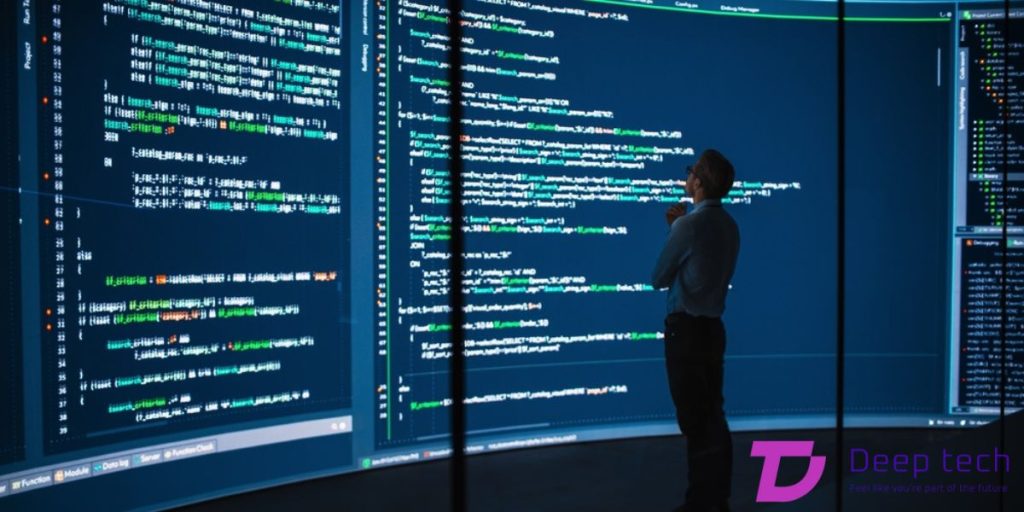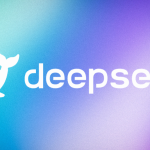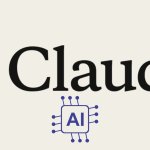Machine learning is like teaching computers to think for themselves. It’s a part of artificial intelligence, which is all about making computers act smarter. But here, the twist is, we don’t have to give them a detailed plan to follow. Instead, we let them learn from experience.
Here’s how it works: Imagine you have a robot. In old-school programming, you’d tell the robot exactly what to do step by step. But in machine learning, you’d show the robot lots of examples and let it figure out things on its own. It’s kind of like teaching a dog new tricks. You show the dog what to do a few times, and it learns the rest by itself.
To make this happen, we need two things: good data (information) and special tools (called algorithms) to train the computer. Think of algorithms as recipes for teaching the computer. We choose the right recipe depending on what we want the computer to learn.

Now, you might wonder how it’s different from traditional programming. Well, in regular programming, it’s like giving a recipe to the computer and asking it to cook. But in machine learning, it’s more like showing the computer some dishes and letting it come up with its own recipe to cook something tasty.
The story of Machine Learning
Let’s talk about the journey of machine learning, but we’ll keep it simple and friendly.
So, way back in 1943, two guys named Warren McCulloch and Walter Pitts got together and wrote a paper. It was all about how our brains work with little things called neurons. They even made a model with electrical circuits that acted like these neurons, and that’s how the idea of a neural network was born.
In 1950, a clever guy named Alan Turing came up with something called the “Turing Test.” This test wanted to see if computers could be as smart as people. To pass the test, a computer had to make a person believe it was also a person, not a machine. It was a big deal at the time.
A few years later, in 1952, a guy named Arthur Samuel made a computer program that could learn as it played checkers. That was the first time a computer learned something on its own.
Then, in 1957, a smart person named Frank Rosenblatt created the first neural network called the “perceptron.”
The ’90s were a game-changer. That’s when machine learning went from being about what people knew to what computers could learn from big piles of data. You know, like lots and lots of information.
In 1997, IBM made a computer called Deep Blue, and it beat the world champion in chess. That was a big deal for computers.
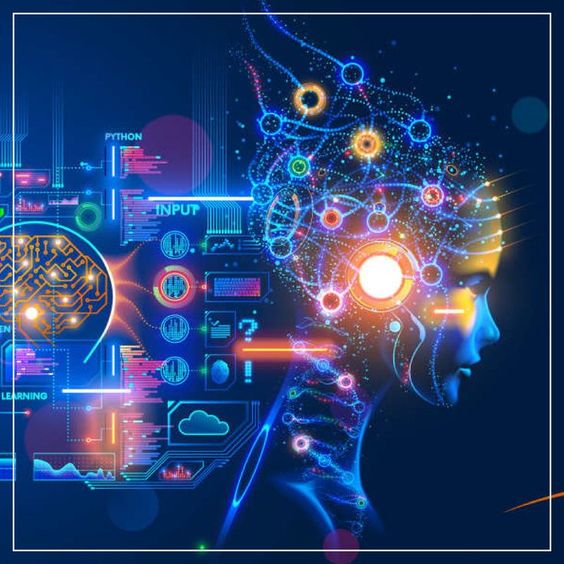
Businesses started to see that machine learning could help with tough calculations. Some cool projects came up in the 2000s. Google made something called “Google Brain” in 2012. It’s like a computer brain that can look at pictures and videos and recognize things. It was even used to find stuff in YouTube videos.
Then in 2014, Facebook made “Deep Face.” It can recognize people, just like we do! It’s pretty amazing. And there’s this game called Go, which is super hard for computers to play. But in 2014, a computer program called “Alpha Go” beat a professional player. That was a big moment for artificial intelligence.
But, you know, some really smart folks like Stephen Hawking and Stuart Russell have been worried. They think if AI gets too powerful, it could be a big problem for us humans. So, they’re concerned about an “intelligence explosion” that might not be good for us.
Elon Musk started an organization called “Open AI” in 2015 to make sure AI is safe and helpful to people.
Today, some exciting things are happening in AI. There’s “Computer Vision,” which is like giving computers eyes to see things. “Natural Language Processing” helps computers understand and talk with people. And “Reinforcement Learning” is about computers learning to make decisions like we do. It’s a fascinating journey, and we’re just getting started!
Why Learning Machine Learning Matters
Machine learning is like teaching computers to learn from their experiences, just like we learn from our own experiences. It’s not about telling the computer exactly what to do, but letting it figure things out on its own.
So, why should we care about learning machine learning?
- Big Job Opportunities: Learning machine learning opens the door to lots of cool jobs in fields like healthcare, finance, and online shopping. You can help companies make things better and solve problems.
- Smart Computers: Machine learning can help computers make smart choices and predictions based on information. That’s super useful for businesses. They can do better and make new things for us to use.
- Data Detective: Machine learning helps you be a data detective. You can dig into big piles of information and find hidden secrets and patterns. It’s like being a detective, but for numbers.
- Stay in the Know: Machine learning is always changing and growing. When you learn it, you can keep up with the latest stuff and maybe even discover something brand new.
So, machine learning isn’t just for tech wizards. It’s for anyone who wants to help make the world better with smart computers and data magic!
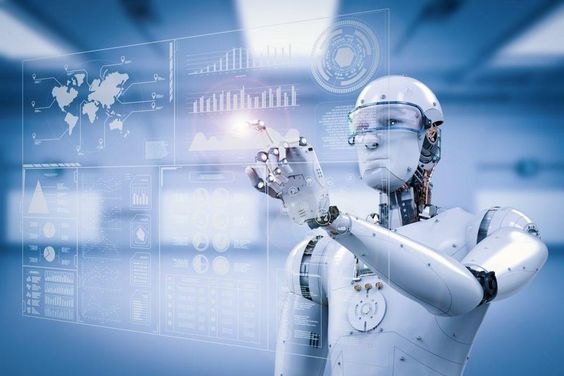
Let’s start exploring Machine Learning in simple words.
Machine Learning is like teaching a computer to learn from examples. To do this, we need to understand some important words:
- Model (or you can call it “Hypothesis”): This is like a computer’s guess about how things work. The computer uses special math to make this guess. It needs some training and data to make this guess.
- Feature: Think of features as facts or characteristics about something. For example, if you’re talking about cars, a feature could be the color or the size.
- Feature Vector: This is just a fancy name for a bunch of features. It’s like collecting a lot of information about something, like a car’s color, size, and weight. The computer uses this information to learn.
- Training: This is when the computer learns from data. It looks at a set of information called “training data” and tries to find patterns in it. This helps the computer make its guess (the model).
- Prediction: Once the computer has learned, it can start making predictions. It takes new information and tries to tell you what might happen based on what it has learned.
- Target (or Label): This is like the computer’s goal. It’s what the computer is trying to figure out. For example, if we’re talking about cars, the target could be the price.
- Overfitting: Imagine if you told the computer too much information, even things that don’t really matter. It might get confused. Overfitting is when the computer learns too much from noisy or incorrect data.
- Underfitting: On the other hand, if the computer doesn’t learn enough, it’s like not paying attention in class. It can’t make good guesses because it doesn’t understand the real story in the data.
So, Machine Learning is all about teaching computers to learn and make good guesses using the right information. Just like teaching a friend to understand something by showing examples and helping them get it right!
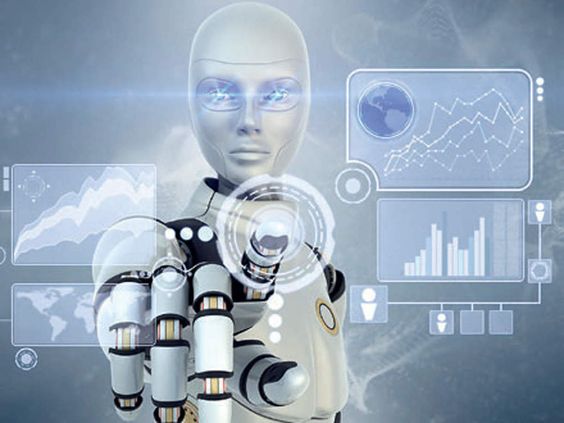
Let’s break down the world of Machine Learning into simple steps.
1. Gathering Data
Think of it like collecting information, just like you gather your favorite toys.
2. Preparing that data
Now, it’s like getting your toys ready to play with. Making sure they’re clean and organized.
3. Choosing a model
Imagine this as picking the right game to play with your toys. Each game is different, just like machine learning models.
4. Training
This is like learning how to play the game with your toys. The machine learns from the data.
5. Evaluation
After playing, you see how well you did. Did you win or lose? Machine Learning checks if it’s doing a good job.
6. Hyperparameter Tuning
It’s like adjusting the rules of your game. Making it easier or harder as needed.
7. Prediction
Now, it’s time to use what you’ve learned. Like guessing which toy is hidden under a cloth.
But, to get into all of this, you need to learn a few things first.
- Learn a programming language (like Python): It’s like learning a new language so you can talk to the machine.
- Brush up on some math: You don’t need to be a math genius, but some math basics help.
- Linear algebra: Think of it as understanding different types of numbers and how they work together.
- Mathematical Analysis: This is like figuring out how things change. It helps the machine make decisions.
- Probability theory and statistics: It’s like understanding chances and data patterns.
- Multivariate Calculus: A bit more advanced math for solving complex problems.
- Algorithms and Complex Optimizations: Learning how to make the machine work efficiently.
Now, how does Machine Learning actually work? It’s like a game with three main parts:
- The Model: This is like the player in the game. It’s the part that makes predictions, just like you guess which toy is hidden.
- The Parameters: These are like the rules of the game. The model uses them to make predictions.
- The Learner: This is the one who adjusts the rules and the model to make better predictions. Think of it as learning from experience.
Let’s take an example to understand. Imagine the machine needs to tell if a drink is beer or wine.
- The Model: It’s like the person guessing the drink.
- The Parameters: These are like the things the person looks at, in this case, the color and alcohol percentage of the drink.
- The Learner: This is the one who gets better at guessing by adjusting how important color and alcohol are in making the guess.
So, that’s how Machine Learning works, just like learning to play games with your toys and getting better at it.
Let’s break down these concepts in simple terms.
1. Learning from the training set
Imagine you want to teach a computer to tell the difference between wine and beer based on their color and alcohol level. To do this, you start by showing the computer lots of examples of wine and beer, and you tell the computer what each one is. These examples are like your training materials.
You can think of the color as ‘x’ and the alcohol level as ‘y’. Each drink gets an ‘x’ and ‘y’ value. This collection of drink data is your training set. When you plot these ‘x’ and ‘y’ values on a graph, it helps the computer understand what wine and beer look like.
2. Measure error
After the computer learns from your examples, you want to check if it’s doing a good job. You give it new drinks it hasn’t seen before and see if it can correctly say if it’s wine or beer.
There are four possible results:
- It says “wine” when it’s really wine (that’s a “True Positive”).
- It says “beer” when it’s really beer (also a “True Positive”).
- It says “wine” when it’s actually beer (a “False Positive”).
- It says “beer” when it’s actually wine (a “False Negative”).
The sum of the “False Positives” and “False Negatives” is the total error. We want to minimize this error.
3. Manage Noise
In real life, problems are often more complicated. Instead of just looking at color and alcohol, you might need to consider many factors, like taste, smell, and more. This makes the computer’s job harder because there’s more room for mistakes.
Noise is like unwanted confusion. It’s the stuff that makes it tough for the computer to learn. Noise can come from:
- Having too much data to learn from.
- Mistakes in the data you give to the computer.
- Errors in labeling your data (like saying wine is beer by accident).
- Things that affect the drink but you didn’t tell the computer about.
To make things simpler, you might allow a little bit of error caused by noise. The goal is to keep things as simple as possible while still being accurate.
4. Testing and Generalization
It’s like trying on a new outfit to see if it fits you well. When we teach a computer program or an idea to work with some data, it’s like training it. But, just because it’s good at what it learned during training, doesn’t mean it will do well with new data. So, we need to check if it’s ready for new stuff. That’s called testing.
Generalization is like predicting how well the program or idea will do with new things. It’s a bit like guessing if your new outfit will look good in different situations.
Now, when we teach a program or idea, we want to keep it simple, but not too simple. If it’s too simple, it’s like wearing pajamas to a fancy party – it won’t work well. We call this “underfitting.”
On the other hand, if we make it too complicated, it’s like wearing a tuxedo to the beach – also not a good fit. This is called “overfitting.” In both cases, we adjust and teach it some more.
As for which language is best for Machine Learning, hands down, Python is the best. It’s like the most comfortable and versatile outfit you can wear. It’s easy to read and use, which is great for making Machine Learning work. Machine Learning involves some fancy math stuff, and Python helps make it easier.
Python also has ready-made tools that make things simpler. For different tasks, there are different tools, like:
- Numpy, OpenCV, and Scikit for working with images.
- NLTK, Numpy, and Scikit for working with text.
- Librosa for audio stuff.
- Matplotlib, Seaborn, and Scikit for showing data nicely.
- TensorFlow and Pytorch for deep learning.
- Scipy for doing science stuff.
- Django for making web things.
- Pandas for organizing and studying data.
So, Python is like your trusty outfit that makes Machine Learning feel comfy and cool.
Difference Between Machine Learning, Artificial Intelligence and Deep Learning
Artificial Intelligence (AI) – This is all about making computers smart, like us. We want them to think and do things just like humans do.
Machine Learning (ML) – Think of this as a part of AI. It’s like teaching computers to learn from information, kind of like how we learn from our experiences, rather than giving them a set of specific rules.
Deep Learning – This is like a special type of learning within machine learning. It uses something called “neural networks” with many layers to figure out really tricky stuff from data.
To put it even more simply:
- AI is the big umbrella that covers all smart computer stuff.
- ML is a part of AI where we teach computers to learn.
- Deep Learning is a fancy way of teaching computers with super advanced techniques.
So, AI is like a big family, ML is a kid in that family, and Deep Learning is a cool, smart cousin of ML.
Three Kinds of Machine Learning
When we talk about machine learning, there are three main types:
1. Supervised Learning:
This one’s like having a teacher. Imagine you have some input stuff (let’s call it ‘x’) and some target stuff (‘y’). So, you’re trying to teach the machine how ‘x’ relates to ‘y.’ It’s like finding a rule that says, “When ‘x’ looks like this, ‘y’ should be like that.” The machine learns this rule and uses it to make predictions.
Think of it like teaching a robot to recognize cats and dogs. You show it pictures of cats (the ‘x’) and tell it, “These are cats” (the ‘y’). It learns that when it sees similar pictures, they’re probably cats.
There are two main types of supervised problems:
- Classification: This means putting things into groups. Like, “Is it a cat or a dog?”
- Regression: This is about predicting numbers. For example, “How much does this house cost?”
2. Unsupervised Learning:
This one’s like exploring a mysterious forest with no guide. You don’t have a teacher telling you what’s what. You just have a bunch of stuff (the ‘x’) and you want to find patterns or groups within it. No ‘y’ here to tell you if you’re right or wrong.
There are two main things you can do in unsupervised learning:
- Clustering: Imagine you have a pile of different fruits, and you want to group them by type. Like all the apples together, all the oranges together, and so on.
- Density Estimation: This is like trying to figure out the shape of a big cloud of fireflies in the dark. You want to understand how they’re spread out.
There are other things like making cool pictures and simplifying data, but let’s not make it too complicated.
3. Reinforcement Learning:
This one’s like training a pet. You have an agent (the pet) and an environment (the world it lives in). The agent gets rewards for doing good things and punishments for doing bad things. It learns how to act in the environment to get more rewards.
Imagine playing a video game. You want your character to score high, so you make moves to get points. The game (the environment) tells you when you do something good (reward) or bad (penalization). You learn from these reactions and get better at the game.
An amazing example is Google’s AlphaGo, which became a world champion at a game called Go. It learned to make clever moves by itself, just like how you learn to play a game better over time.
So, these are the three types of machine learning, each with its own way of learning and solving problems. It’s like having different tools for different jobs in the world of computers and AI.
Advantages and Disadvantages
Advantages:
- ML can spot patterns in data.
- It can predict future stuff.
- ML can create new things from data.
- It’s great at grouping data automatically.
- It can find weird things in data.
Disadvantages:
- Sometimes, ML might favor some data too much.
- It can get too obsessed with the data it knows.
- ML doesn’t always explain its decisions.
Machine Learning Algorithms
Choosing the right computer programs for learning can be tricky and takes time. These programs can be put into two groups. First, they are sorted by how they learn, and second, by what they do.
Let’s look at how they learn:
1. Guided Learning Programs
In these programs, they get examples with labels to learn from. It’s like teaching them with answers in hand. They keep learning until they get good at it. For example, they’re used for sorting things or making predictions. Some popular ones are Logistic Sorting, Nearest Neighbor, and Decision Maker.
2. Independent Learning Programs
Here, they get data without any labels. It’s like a puzzle with no picture on it. They figure out patterns by themselves. This is used for things like finding groups in data or reducing its complexity. Two popular programs are Apriori and K-Means.
3. Mixed Learning Programs
These are a bit of both. Some data is labeled, some isn’t. They learn on their own, like independent learners, but also try to put things in groups, like guided learners. It’s like solving a puzzle while learning about different things.
Based on the similarity of function, the algorithms can be grouped into the following:
Regression Tricks
Regression is like connecting the dots. It helps us understand how different things are related. We can predict new things based on what we’ve seen before. Here are the top six tricks: Simple Linear Trick, Lasso Trick, Logistic Trick, Multivariate Trick, and Multiple Trick.
Matching Friends
These are the matchmakers of algorithms. They compare new things with old friends to find the best match and make predictions. Our top matchmakers are: k-Nearest Neighbor, Learning Friend, Self-Organizing Friend, Local Helper, and Support Buddy.
Taming the Wild
Sometimes, we need to keep things in control. We don’t want one thing to take over everything. This is like training a pet. It stops one thing from being too bossy. We have Ridge Control, LASSO Control, and LARS Control.
Decision Makers
Imagine making a flowchart to help you decide things. That’s what decision tree algorithms do. They’re like roadmaps for choices. Some famous ones include: C&R Tree, C4.5, C5.0, Conditional Trees, and Chi-squared Detectives.
Bayesian Algorithms
Think of these as smart tools that help us sort things or make predictions. They are like puzzle pieces that help us figure out where something belongs or how it’s related to other things.
Clustering Algorithms
These are like sorting items into groups based on how similar or different they are. It’s a way to organize things without being told exactly how to do it. Imagine organizing your toys into different boxes, each for a specific type.
Association Rule Learning Algorithms
These are like rules or patterns we find when we’re trying to see what things go together. For example, if people often buy peanut butter and jelly together in a store, this algorithm helps us notice that connection.
Artificial Neural Network Algorithms
These are computer programs that try to imitate how our brains work. They help us solve problems and make guesses, especially when we have lots of information. It’s like training a robot to recognize different types of animals.
Deep Learning Algorithms
These are like super-smart versions of the previous algorithms. They can handle huge amounts of information, like text, images, sound, and videos. It’s like having a super detective who can understand all sorts of clues.
Dimensionality Reduction Algorithms
Dimensionality Reduction Algorithms are like magic tricks for data. They help make data simpler without losing the important stuff. Imagine you have a big jigsaw puzzle, and you want to turn it into a smaller puzzle that’s easier to solve. That’s what these algorithms do.
They take complex data and make it simpler, so we can use it in other cool stuff like classifying things or making predictions. Some of these magic tricks are Principal Component Analysis, Principal Component Regression, Linear Discriminant Analysis, Quadratic Discriminant Analysis, Mixture Discriminant Analysis, Flexible Discriminant Analysis, and Sammon Mapping.
Ensemble Algorithms
Ensemble methods are like a team of superheroes. Each superhero has their own special powers, and when they work together, they become even more powerful. In the world of data, ensemble methods combine different models that are good at specific tasks. They work separately, and their results are blended in a smart way to make a final prediction.
The quality of the final prediction depends on how well they combine their powers. Some of these superhero methods are Random Forest, Boosting, Bootstrapped Aggregation, AdaBoost, Stacked Generalization, Gradient Boosting Machines, Gradient Boosted Regression Trees, and Weighted Average.
Applications of Machine Learning
Let’s talk about Machine Learning, or ML for short. It’s like teaching computers to be really smart by learning from stuff that happened before. People use ML in lots of different jobs to solve problems or make new things that are better.
1. Recognizing Faces and Pictures
Imagine when your phone recognizes your face to unlock it – that’s ML in action! It’s not just for phones, though. People use it to find bad guys, help find missing people, and even in marketing to sell things better. It can also help doctors figure out what’s wrong with someone and keep track of who’s in school.
2. Talking to Computers
ML can also understand what we say. We talk, and it turns our words into words on the computer. They use it in medicine, robots, solving crimes, flying planes, talking on the phone, making homes smarter, and even using gadgets like tablets and TVs.
3. Helping Money Matters
Okay, let’s talk about how clever computers are making our financial world safer and more efficient. They’re like super-sleuths, spotting bad guys trying to steal our money. These computer wizards keep an eye on our bank accounts and can tell if something fishy is happening.
They’re also great at helping with trading, like when people buy and sell stocks. They can check lots of information really quickly and help make smart decisions. Ever heard of credit scores? These computers can help figure out if we can borrow money or not. And don’t forget about those helpful voice assistants like Siri and Alexa; they’re also made smarter with these computer tricks.
4. Making Sales and Marketing Better
You know when you get those emails and visit websites? Well, these clever computers are getting even better at understanding what we like. They can tell if we’re interested in something by looking at what we click and open. This helps businesses know who might want to buy their stuff.
They also help companies decide how much to charge for things. It’s like a super-smart pricing strategy. Ever wonder if people like a new product or a special deal? These computers can figure that out too. Plus, they’re like superheroes for finding things in pictures and videos on the internet.
And don’t forget about chatbots; they’re like super-friendly helpers who answer our questions online.
5. Keeping Us Healthy
Now, let’s talk about how these smart machines are helping doctors and scientists keep us healthy. They’re like super-detectives for finding diseases that are really hard to spot. They can also make treatments like radiotherapy work better.
Finding new medicines is really hard and expensive, but these computers can make it easier. They’re like super-researchers who can find the right medicine faster. Also, they help scientists predict when a disease might become a big problem.
So, these computer whizzes are like our helpers in lots of ways, making our money, shopping, and health better. Cool, right?
6. Recommendation Systems
You know when you’re shopping online, watching movies, or listening to music, and the website or app suggests things you might like? Those are recommendation systems at work! They’re like your helpful friend who knows what you enjoy.
Many businesses use recommendation systems to make your experience better. Think about big online stores like Amazon and Flipkart. They use them to show you cool stuff you might want to buy. And when you’re on platforms like Spotify and Netflix, recommendation systems help you discover new songs and shows you’ll love.
Real-life uses of machine learning
1. Catching Bad Stuff
Machine learning helps catch tricky things like fake money moves and fake online profiles.
2. Picture and Talk Smarts
Machines can learn to recognize faces, objects, and even words in photos and voice recordings.
3. Fix Stuff Before It Breaks
With machine smarts, we can figure out when machines might go bad and fix them before they break.
4. Make It All About You
Machines use learning to suggest stuff you might like, from shopping ideas to movie picks.
5. Health Help
Machine learning can predict how patients will do, find possible sickness outbreaks, and help with treatment plans.
6. Talking Like People
Machines can learn how we talk and help with translations or chat with you.
What’s Next for Machine Learning?
The future of machine learning is a bit like predicting the weather – it’s not easy to get it just right. But we do know that it will keep making big changes in science, tech, and life. Smart helpers, super health care, and self-driving cars are on the horizon. And machine learning can help solve world problems like poverty and climate issues.
Machine learning will keep getting better, with clever folks inventing new tricks to make it work even cooler. They’re also dreaming of building machines that can learn almost anything, just like a super-smart human.
So, keep your eyes on the machine learning world – it’s bound to surprise us with its smarts!
To sum it up
Machine learning is like giving super-smarts to computers. It’s like teaching them from the stuff they see and do, just like we humans learn. This idea has been growing for a long time, starting with smart folks like McCulloch, Pitts, and Turing. Nowadays, it’s all about deep learning and reinforcement learning.
But here’s the cool part: machine learning isn’t just for tech wizards. It’s a big deal for lots of jobs and makes computers super brainy. Plus, it lets regular people become like Sherlock Holmes with data.
To really get it, you need to know some basic stuff like models, features, training, and prediction. You’ve also got to learn languages like Python and some math. That’s the secret to mastering machine learning.
Machine learning comes in different flavors, like supervised, unsupervised, and reinforcement learning. Each one has its own special powers and uses. And the real heroes here are the algorithms – they’re like the tools in a superhero’s belt. They help with things like sorting, guessing, and making things simpler.
You see machine learning everywhere, from recognizing faces to understanding what we say. It helps with money stuff, marketing, and keeping us healthy. It can even predict diseases and make shopping online cooler.
The future of machine learning is like a treasure hunt. We might get super-smart helpers, better ways to stay healthy, self-driving cars, and maybe even fix big problems like poverty and climate change. As tech keeps growing, machine learning is like the star of the show, giving us tons of chances to do cool stuff.

